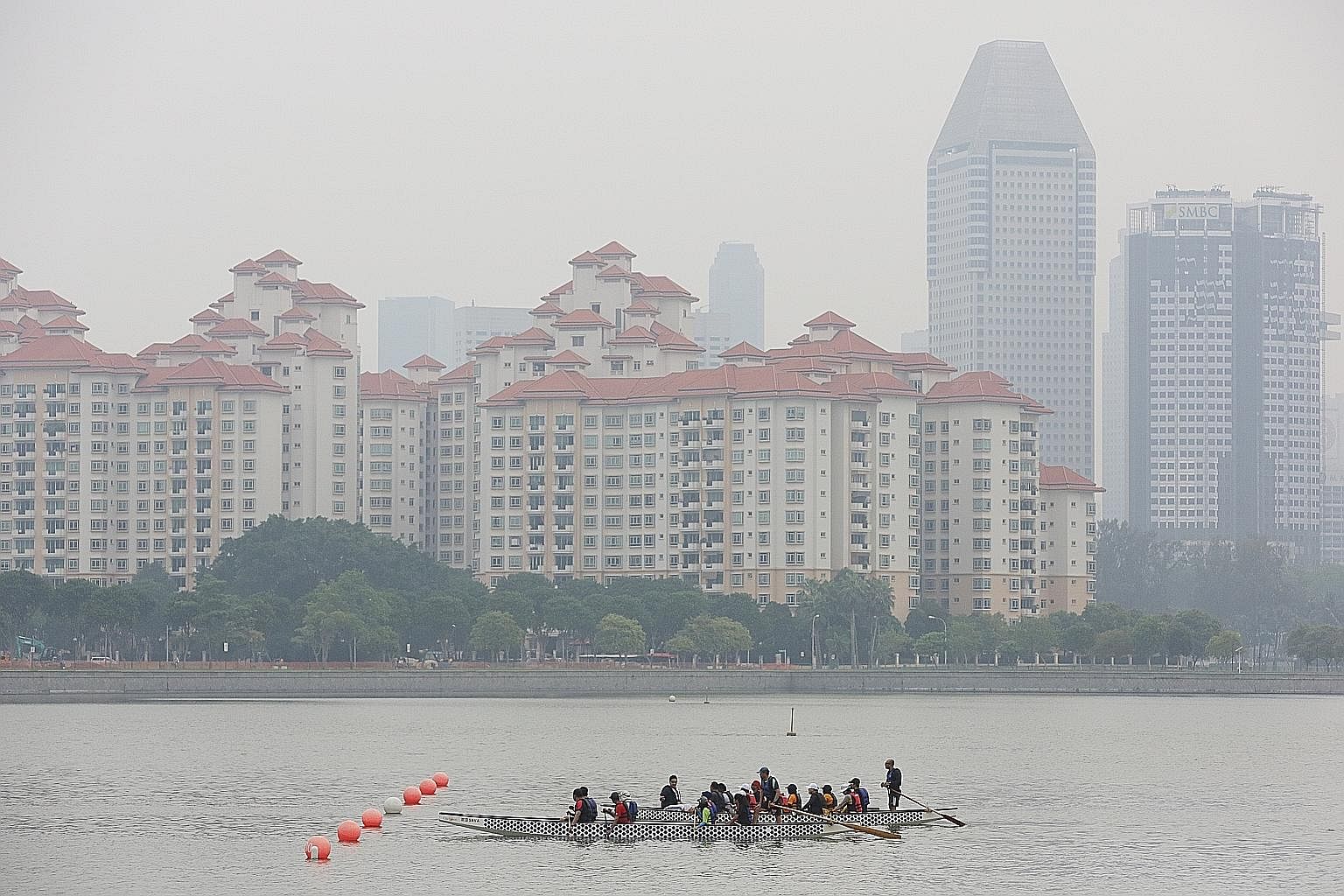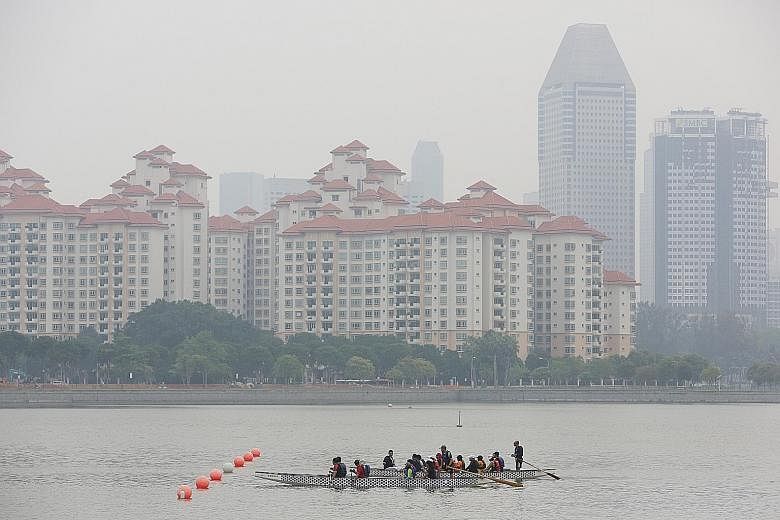The haze is back with a vengeance, and this year's seasonal episode is well on its way to becoming the worst on record.
Foul-smelling air and health concerns aside, the haze has also cast a pall on the National Environment Agency's (NEA) ability to provide timely air quality readings.
The Pollutant Standards Index (PSI) readings posted on www.haze.gov.sg do not provide up-to-date information which people can use to plan their day, say some individuals, volunteer groups and organisations, which are turning to at least three different alternative sources to judge how hazy it is here at any given moment.

Their issue is this: Amid periods of intense haze, when PSI readings fluctuate and air quality does not always correspond to the smell and look of the air, hourly PSI readings are needed to help people better plan their activities to avoid exposure to air pollution at its worst.
The NEA website provides 24-hour and three-hour PSI readings that measure the average concentration levels of six component pollutants over the given period. These readings are accurate and reliable. But they do not provide information on actual conditions, says Dr Erik Velasco, an air pollution researcher from the Singapore-MIT Alliance for Research and Technology.
On top of the consolidated PSI readings, the haze website also provides breakdowns of the concentrations of individual pollutants. It gives hourly concentrations of nitrogen dioxide and PM2.5 - the main pollutant in transboundary haze. It also provides eight-hour concentrations of carbon monoxide and ozone, and 24-hour concentrations of PM2.5, PM10 and sulphur dioxide.
These readings are complicated - they have different hourly averages and different measurement units, such as milligrams per cubic metre for carbon monoxide and micrograms (mcg) per cubic metre for the others.
Said Mr Kavickumar Muruganathanm, head of eco-certifications and lead environmental engineer from non-government organisation the Singapore Environment Council (SEC): "To the man in the street, he would find it hard to evaluate and interpret these figures.
"A uniform index-based reporting system would be useful for easy understanding of the air quality based on individual pollutants for a layman."
A one-hour PSI reading could do just that.
Now, NEA says that although there have been recent studies on sub-daily or shorter PM2.5 exposure, "the evidence of these studies is not sufficient for the development of one-hour PSI".
This has not stopped volunteer groups, such as the People's Movement to Stop Haze (PM.Haze), from taking matters into their own hands. The group calculates one-hour PSI readings for north, south, east, west and central Singapore by using the one-hour PM2.5 concentration data and mathematical formula found on NEA's website.
Group president Tan Yi Han said: "The rationale is simply to provide more accurate information of the current pollution level that a person is being exposed to.
"As one-hour PM2.5 concentrations are already being provided for each region, why not display it in the PSI format?"
But, to put things in perspective, on a day when PM2.5 levels hit 100mcg per cubic metre, a person will take in around 1,100mcg of these pollutants if he stays outdoors throughout the day. This is much less than the amount of PM2.5 pollutants a smoker will inhale for every cigarette consumed, which is in the range of 10,000mcg and 40,000mcg.
On a regular, non-hazy day, the maximum concentration of PM2.5 is usually between 20 and 35 mcg per cubic metre, said an expert. They start becoming a serious problem when the numbers hit 100, and dangerous when they exceed 200.
The authorities here also base health advisories on the 24-hour PSI as scientific, and epidemiological studies on the health effects of particulate matter have been based on these measurements.
Experts acknowledge that more studies are needed to investigate the impact of short-term exposure to haze on health. But many point out that one-hour PSI readings should still be provided to help people decide on personal protection measures.
Mr Tan noted that 24-hour PSI readings take 24 hours to reflect changes in air quality, even if PM2.5 levels swing drastically.
Last Saturday, for instance, the one-hour PM2.5 reading at 4pm was 200mcg per cubic metre. At 5pm, it rose to 252mcg per cubic metre. "People who rely on the 24-hour PSI may have been doing strenuous outdoor activities for the whole day and exposing themselves to a very unhealthy dose of pollution," he said.
So, instead of the official website, people are turning to websites such as by.originally.us/psi/real or aqicn.org for haze updates. This is less than ideal, as it means misinformation can spread easily.
Just a few weeks ago, a rumour claiming the Government had seeded clouds to clear the skies for the Formula One race was circulated. It implied that the resultant rain was harmful.
The information was untrue.
As Dr Velasco put it: "The main goal of the PSI should be to communicate... air quality conditions using a simplified scale with no technicalities. Having an index for each pollutant won't be practical or efficient to communicate with the public."
The NEA took a step in the right direction when it included concentrations of PM2.5, the main pollutant of concern, into PSI calculation last year. Providing one-hour PSI readings should be its next goal.


